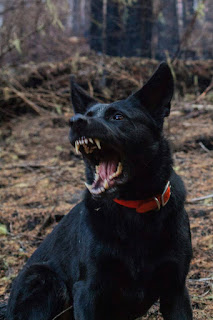Navigating Canine Reactivity: A Journey to Positive Change
Reactivity wasn’t immediately evident when we adopted Felix, our lively 100lbs Labrador mix. Initially drawn to his affection and zest for life, we soon noticed signs of reactivity towards cars, loud noises, and especially other dogs.
In my quest for solutions, I delved into online research, encountering recommendations for corrective techniques like leash popping. Despite temporary improvements, Felix’s reactivity persisted and even worsened.
The turning point came with the discovery of Karen Pryor’s website, clickertraining.com, offering invaluable dog training insights. Transitioning from corrective to positive reinforcement methods marked a pivotal moment, leading to significant improvements in Felix’s behavior. This transformative journey inspired me to become a Karen Pryor KPA-CTP trainer, eager to share this approach with others.
Coping with Over-Threshold Reactions:
"Over-threshold" describes a state where a dog’s arousal or stress surpasses manageable levels, leading to them not being able to redirect their attention away from a trigger. Once over-threshold, owners can use techniques like creating distance, calming exercises, and redirecting focus to help their dogs relax. I also encourage you to let go of any feelings of shame that might come up when your dog reacts strongly, IT’S OKAY!
Recognizing this state is crucial for managing your dog's reactivity and taking proactive steps to create a more comfortable environment. Here’s what to lookout for:
1. Increased Alertness: Your dog becomes hyper-aware of its surroundings, exhibiting heightened alertness.
2. Intense Staring: Fixed or intense staring at the trigger, with a focused and rigid body posture.
3. Freezing or Stiffening: Your dog may freeze in place or exhibit stiffness, indicating tension or discomfort.
4. Raised Hackles: The fur along the back of the neck and spine may stand up, a physical response to stress or arousal.
5. Growling or Barking: Vocalizations such as growling or barking, indicating the dog's discomfort or attempt to ward off perceived threats.
6. Pacing or Restlessness: Excessive movement or pacing can be a sign of nervousness or stress.
7. Lunging or Pulling on Leash: Aggressive or reactive behavior, including lunging or pulling on the leash towards the trigger.
8. Dilated Pupils: Enlarged pupils can indicate heightened arousal or fear.
Training Strategies for Fear-Free Encounters:
Now, let’s explore strategies to transform fear into confidence. Begin by identifying your dog’s triggers. Do this by being present and making note of how your dog reacts to various situation. Use the body language described above to write a list of areas your dog needs help with.
To help your dog overcome his fears, a combination of desensitization and counter-conditioning should be used. Desensitization involves gradually exposing a dog to a trigger at a safe distance and increasing proximity as they become more comfortable, aiming to reduce the emotional response. Counter-conditioning works by replacing negative reactions with positive ones, associating the trigger with positive experiences, thus changing the dog’s emotional response over time. Patience and understanding are crucial for gradual progress.
Below is a training plan to guide you through this process. Expect it to be a gradual transition, it can take weeks to start changing our dogs options of their triggers
Desensitization and Counter-Conditioning Plan for Reactive Dogs
Materials Needed:
- Your dog (on leash)
- High-value treats
-Treat bag
- Quiet, controlled training environment
Steps:
1. Choose a Calm Environment:
- Start by selecting a quiet, distraction-free environment for counter-conditioning. A calm setting helps your dog concentrate on positive associations without unnecessary disruptions that may push your dog over their threshold.
2. Understand Reactivity:
- Identify triggers causing reactivity by observing their body language
- Note the starting distance for reactions, and make sure to start at a distance you know your dog will be comfortable with.
3. Positive Associations:
- When your dog notices the trigger, simply drop a treat on the ground.
- Continue to reward calmness.
- Increase your distance from the trigger if your dog starts to escalate their excitement.
4. Integrated Practice:
- If they start to show lots of signs of calmness, slowly decrease distance one foot at a time. Make sure to not go too fast, or they will most likely react.
- Practice patience by focusing on your breath, if you are feeling stressed, it's a good time to take a break.
- Observe and adjust adjust the pace as needed, every dog is different.
- Maintain a training journal to monitor progress. Progress is often non-liner, dogs like humans do better sometimes than others depending on their current state.
In addressing dog reactivity, Felix's path guided me to positive reinforcement methods. This information aims to help you build your dogs' confidence in a world filled with stressful stimuli. Progress requires patience, but the goal is a more confident and content canine companion. Stay tuned for additional training plans and insights.


Helpful, specific and workable tips!
ReplyDeleteI appreciate your positive feedback and I'm glad you found it helpful. If there are specific topics you would like me to address in future posts, please let me know!
Delete